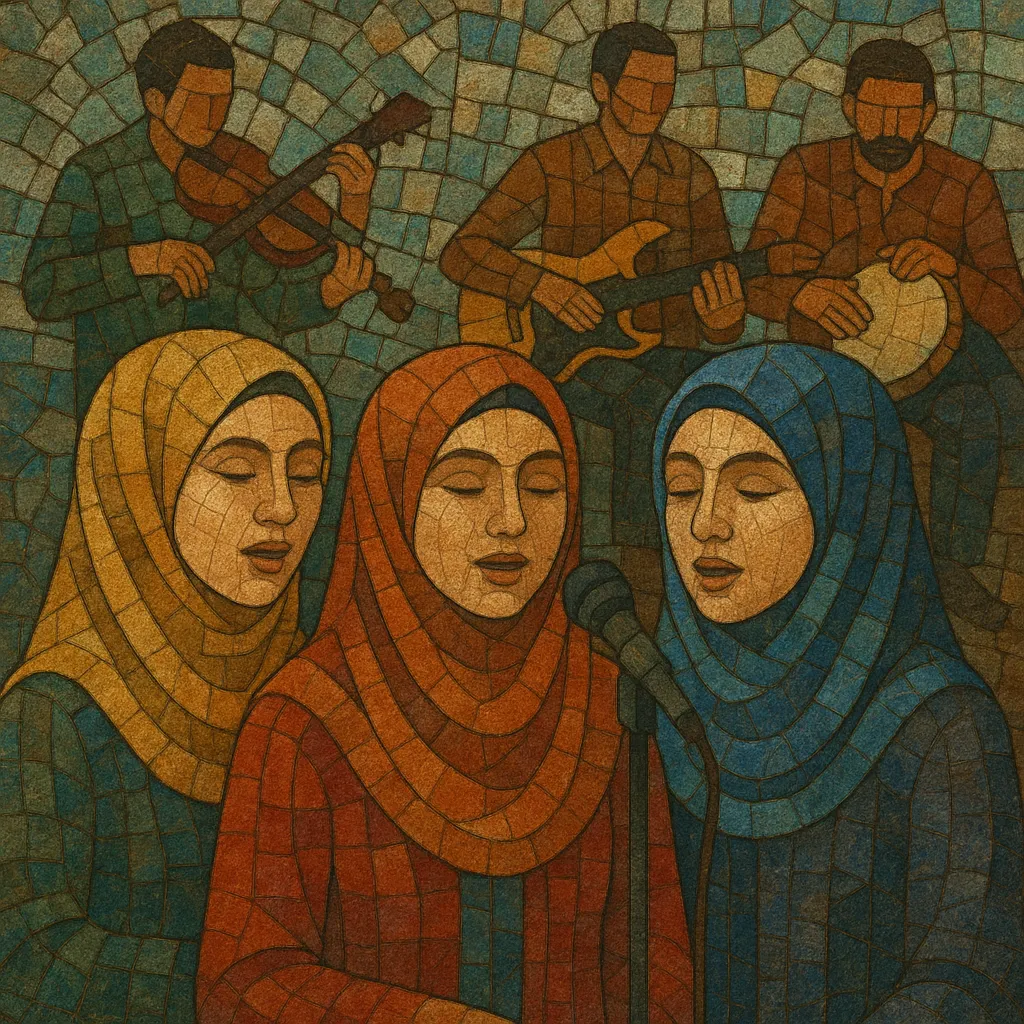Qasidah modern (often stylized as Qasidah Moderen) is an Indonesian Islamic popular music style that updates classical Arabic qasida devotional poetry with contemporary pop, dangdut, and orkes gambus instrumentation. Emerging in the cassette era, it brought religious and moral themes into the realm of catchy, radio-friendly songs.
The style typically features unison or close-harmony female vocal ensembles, electric bass and guitar, keyboards, violins, and a percussion section that blends drum kit with rebana, darbuka, and frame drums. Melodically it draws on maqam-inspired contours (e.g., Hijaz-like colorings) while adopting verse–chorus song forms, call-and-response refrains, and danceable mid-tempo grooves.
Qasidah modern arose in Indonesia during the 1970s, contemporaneous with the rise of dangdut and the widespread cassette culture. It modernized Arabic qasida—poetic devotional songs—by blending the timbres and rhythmic feel of orkes gambus with electric instruments and pop songcraft. Semarang-based ensemble Nasida Ria, founded in the mid-1970s, became the pioneering and best-known group, setting the template for choral delivery, rhythmic drive, and socially conscious Islamic lyrics in Indonesian.
The genre flourished in the 1980s and early 1990s through community events, Islamic festivals, and the Ramadan media season. Cassette labels distributed Qasidah modern widely across Java and beyond. Ensembles—often women’s choruses fronting compact pop bands—developed signature arrangements combining maqam-flavored melodies with dangdut backbeats, light string pads, and bright synths. Lyrical themes ranged from praise of God and the Prophet to moral guidance, social critique, and daily ethical concerns.
While Indonesian “pop religi” and nasheed-influenced styles expanded in the 2000s, Qasidah modern remained a recognizable format for devotional performance with a danceable, uplifting character. It informed contemporary sholawat pop presentations and live majelis gatherings, where modern PA systems and keyboards coexist with rebana ensembles. Legacy recordings by groups like Nasida Ria continue to circulate online, and the style’s melodic and textual aesthetics persist in newer Islamic popular music across Indonesia.


